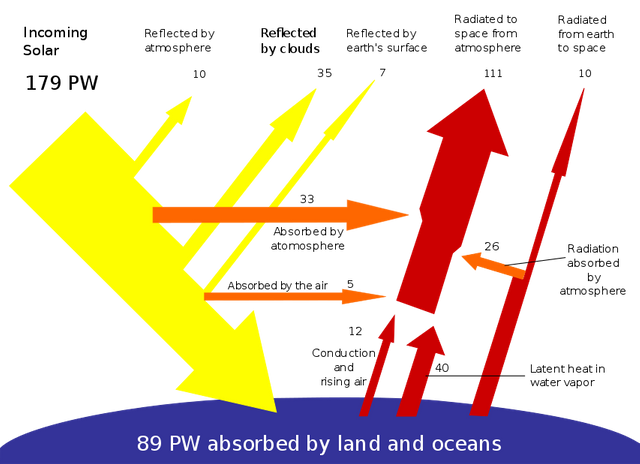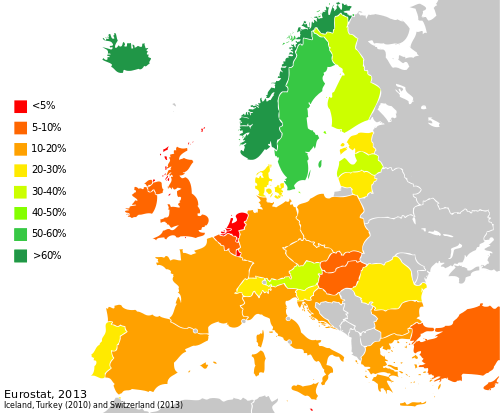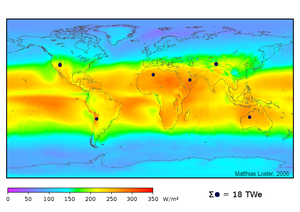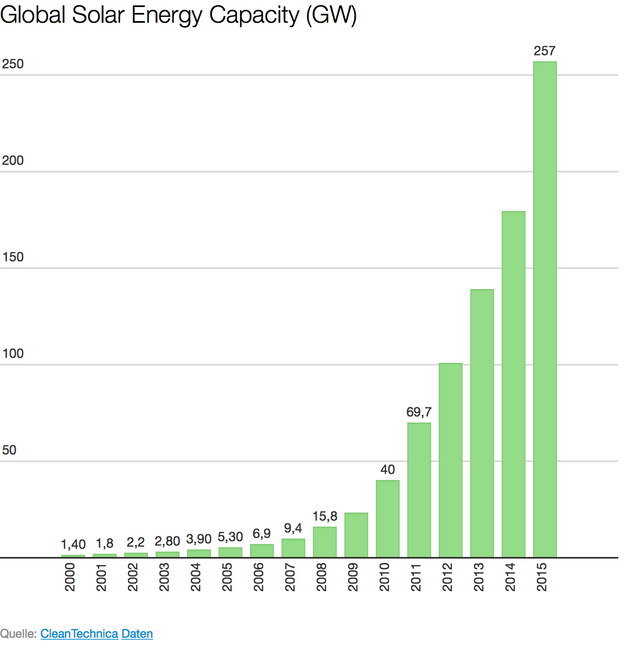SteemitScience #1: What is solar energy? & Why is it so important to us?

Hi steemians, today I come to talk about solar energy, which in recent times has begun to give greater importance to clean energy, these are obtained through the use of renewable resources, usually from nature, to transform them in Electric Power that can be used in the home or in any installation of the Electrical Network of a building, institution or particular environment. There is not only solar energy but also wind energy and others. So let's start from the most important. What is solar energy ?
SOLAR ENERGY
Solar energy is a renewable energy, obtained from the use of electromagnetic radiation from the Sun. The solar radiation that reaches the Earth has been exploited by humans since Antiquity, through different technologies that have been evolving. Today, the heat and sunlight can be exploited by means of various sensors such as photovoltaic cells, heliostats or thermal collectors, which can be transformed into electrical or thermal energy. It is one of the so-called renewable energies or clean energies, which could help solve some of the most urgent problems facing humanity.
Solar technologies can be classified as passive or active according to how they capture, convert and distribute solar energy. Active technologies include the use of photovoltaic panels and solar thermal collectors to collect energy. We have some passive techniques, there are different techniques framed in the bioclimatic architecture: the orientation of the buildings to the Sun, the selection of materials with a favorable thermal mass or that have properties for the dispersion of light, as well as the design of spaces by ventilation natural.
This system to capture energy is my wide and can also be a bit complicated, for those who have never heard about this subject, but I assure you that they would like it, little by little I will explain how each type of energy that they have just read works
Where does this type of energy come from?

The Earth receives 174 petawatts of incoming solar radiation (insolation) from the highest layer of the atmosphere. Approximately 30% returns to space, while clouds, oceans and landmasses absorb the rest. The electromagnetic spectrum of sunlight on the Earth's surface is mainly occupied by visible light and infrared ranges with a small part of ultraviolet radiation..
The power of the radiation varies according to the time of day, the atmospheric conditions that dampen it and the latitude. Under acceptable radiation conditions, power equals approximately 1000 W / m² at the earth's surface. This power is called irradiance. Note that in global terms practically all the radiation received is re-emitted into space (otherwise abrupt heating would occur). However, there is a noticeable difference between the received and the emitted radiation.
How the solar energy starts
The early development of solar technologies, beginning in the 1860s, was motivated by the expectation that coal would soon become scarce. However, the development of solar energy stagnated at the beginning of the 20th century due to the increasing availability and economy of scale of non-renewable sources such as coal and oil.19 In 1974, it was estimated that only six houses Private companies across North America were fed by solar systems.20 However, the 1973 oil crisis and the 1979 crisis brought about a major shift in energy policy around the world and once again focused attention on emerging solar technologies. .21 22 The first development strategies were developed, focusing on incentive programs such as the Federal Photovoltaic Utilization Program in the United States and the Sunshine Program in Japan. Other efforts were the creation of research organizations in the United States (NREL), Japan (NEDO) and Germany (Fraunhofer-ISE) .23 Between 1970 and 1983, the installations of photovoltaic systems grew rapidly, but the fall in the price of oil in the 1980s they moderated the growth of solar energy between 1984 and 1996.
Solar energy is divided into several technologies
- Active solar energy: for low temperature use (between 35 ° C and 60 ° C), it is used in homes; of medium temperature, reaches 300 ° C; and high temperature, reaches up to 2000 ° C. The latter is achieved by striking the sun's rays in mirrors, which are directed to a reflector that carries the rays to a specific point. It can also be for tower stations and parabolic mirrors.
- Passive solar energy: Take advantage of the sun's heat without the need for mechanisms or mechanical systems.
- Solar thermal energy: It is used to produce low temperature hot water for sanitary use and heating.
- Photovoltaic solar energy: It is used to produce electricity through semiconductor plates that are altered by solar radiation.
- Hybrid solar energy: Combine solar energy with other energy. According to the energy with which it is combined is a hybridization

According to reports from Greenpeace, photovoltaics will be able to supply electricity to two thirds of the world's population by 2030. And according to a study published in 2007 by the World Energy Council, by the year 2100 70% of the energy consumed will be of solar origin .
Advantages of the solar system
- The most important of all the advantages is that this type of energy does not pollute. It is a much cleaner energy than others such as nuclear energy, let alone the energy based on fossil fuels.
- When we are talking about solar energy, we can affirm that it is an inexhaustible source. That is, it is a renewable energy that comes from an inexhaustible source that is the sun, so you do not have to worry about it going away, at least not in many millions of years.
- The solar collection systems that are usually used are easy to maintain, which facilitates their choice.
- You will save money as technology advances, while the cost of fossil fuels increases with the passage of time because they are increasingly scarce
Disadvantages of solar energy
- In addition, another disadvantage is that initially requires a strong economic investment to which many consumers are not willing to take risks. However, it is also true that, at a family level, this initial outlay in a few solar panels is usually recovered in a period of around 5 or 7 years.
- When it is decided to use solar energy for an important part of the population, large tracts of land are needed, which makes it difficult to choose this type of energy
- But in addition, the level of radiation of this energy fluctuates from one area to another, and the same happens between one season of the year and another, which may not be so attractive to the consumer.
Countries more consumers of electrical energy

- China (130.4 GW).Frankly, China leaves much to be desired in terms of the environment. This perception is something that may explain why their recent efforts have not received much attention, despite the fact that the country expanded its solar capacity by 81% last year. The country aims to generate 20% of its energy from renewable sources by 2030. In 2014, the country represented up to 70% of the total solar thermal capacity installed in the world. Recently, China activated the largest floating solar plant in the world.
- United States (85.3 GW). Has the technology, talent and environmental conditions that are required for the deployment of solar energy on a large scale (not to mention the increasing demand). But political support for renewables has been uneven, and with Trump withdrawing the United States from the Paris Agreement, the future of solar energy in the United States is far from good. However, some states have set some big goals in relation to renewable energy in general, and solar in particular. Currently, the United States houses many of the largest solar installations in the world, as well as very advanced domestic installations.
- Japan (63.3 GW).With technology and industry, Japan was one of the first to develop solar energy on a large scale and continues to innovate in the sector, with the aim of solar energy covering 10% of the country's energy demand by 2050.
Conclusion
As we have already seen, solar energy is a theme which over the years has taken more and more strength in developed countries. It is a system that is totally clean energy but as it could be observed, as well as it has its advantages, you also have its disadvantages that will surely be much less over time. It is an interesting topic and one that will surely give you something to talk about in the coming years. We have to take advantage of everything that our planet earth and space gives us, we start to take care of it and look for more solutions than disasters. Without anything else to say, I hope you liked it. See you in the next post .
- https://es.wikipedia.org/wiki/Energ%C3%ADa_solar
- https://erenovable.com/energia-solar-ventajas-y-desventajas/
- https://www.importancia.org/energia-solar.php
- https://ecoinventos.com/mayores-paises-productores-energia-solar-del-mundo/
- Do we know what wind energy is? Here we explain it to you.
- Let's Talk About Disability|How is your deal with society?



@OriginalWorks
The @OriginalWorks bot has determined this post by @juanjdiaz89 to be original material and upvoted(1.5%) it!
To call @OriginalWorks, simply reply to any post with @originalworks or !originalworks in your message!
Congratulations @juanjdiaz89! You have completed some achievement on Steemit and have been rewarded with new badge(s) :
Click on any badge to view your own Board of Honor on SteemitBoard.
For more information about SteemitBoard, click here
If you no longer want to receive notifications, reply to this comment with the word
STOPGood my friend.